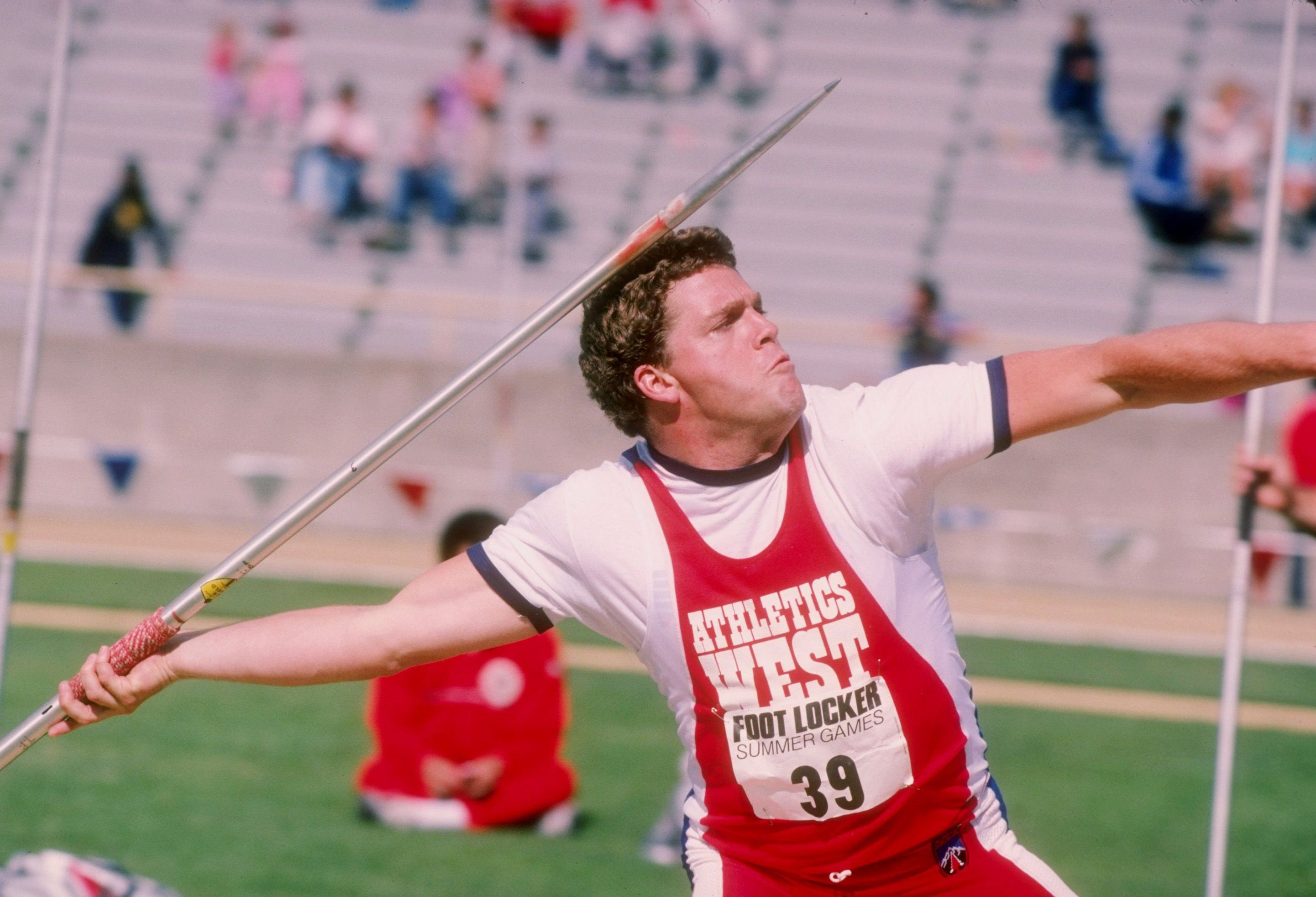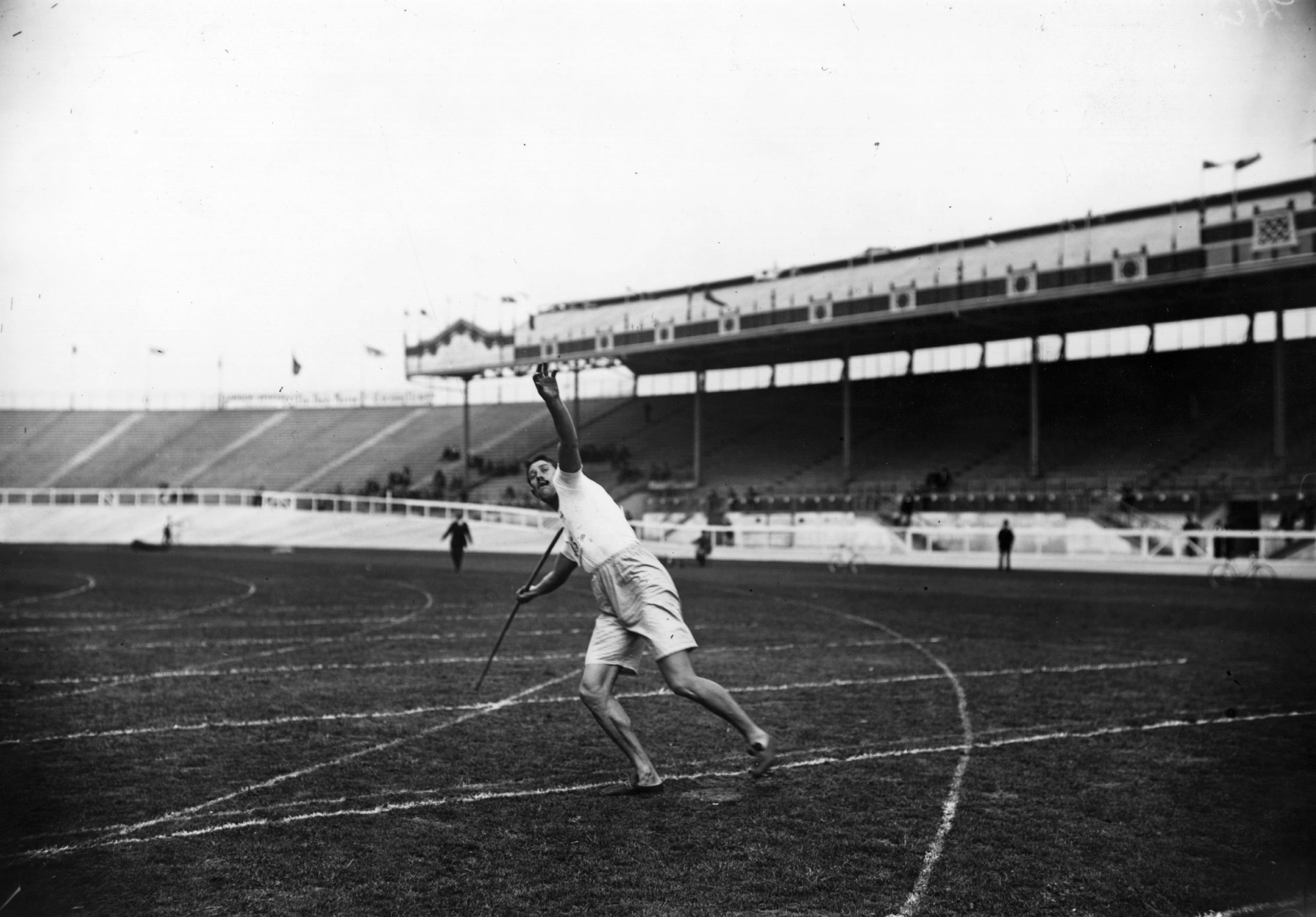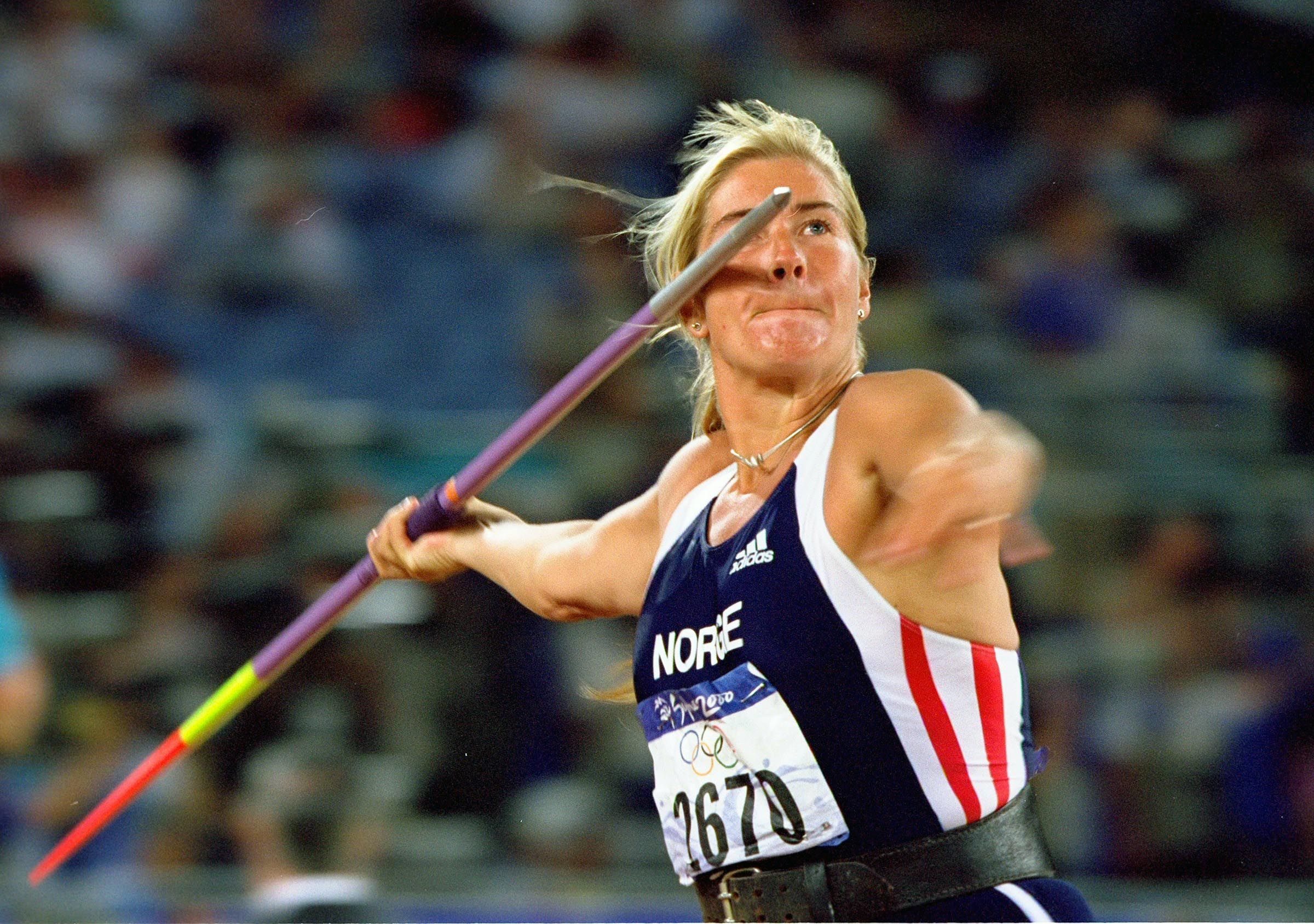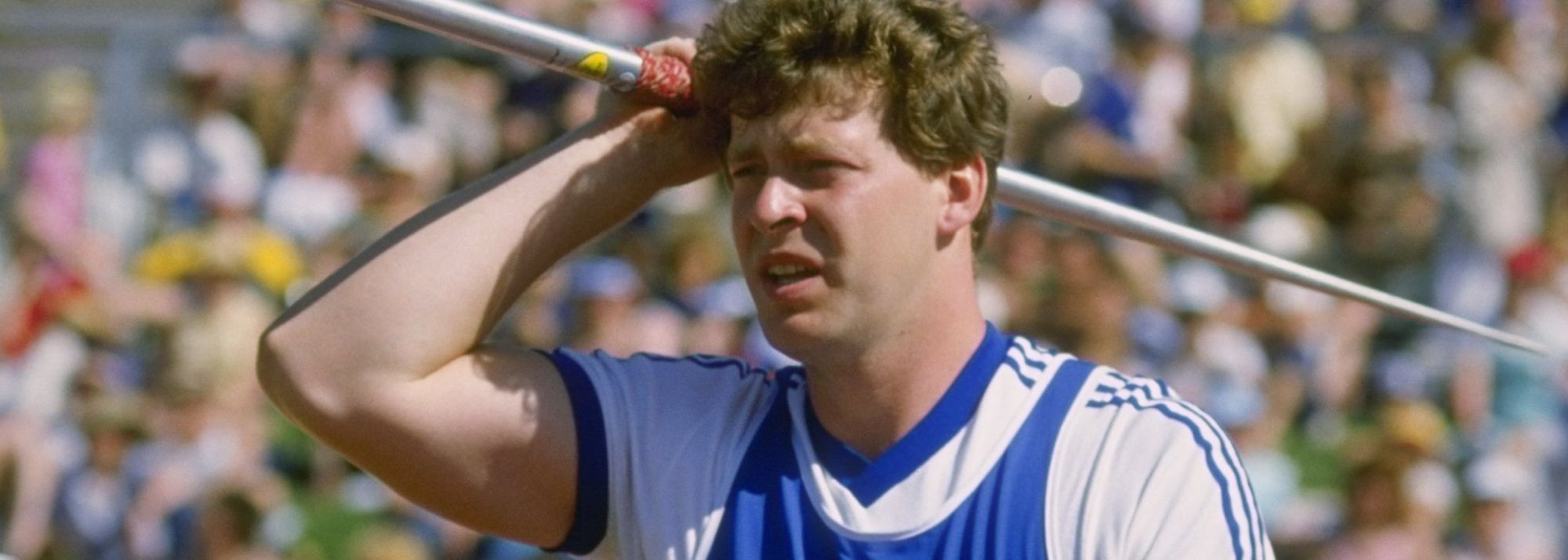Javelin thrower Uwe Hohn (© Getty Images)
When USA’s Tom Petranoff set a world javelin record of 99.72m in May 1983, he assured fans that the javelin could still be thrown even farther, that there was more excitement to come.
It didn’t take long for Petranoff’s prediction to come to fruition.
A little over a year later, in June 1984, Germany’s Uwe Hohn threw 104.80m to surpass Petranoff’s mark, also becoming the first man to throw the javelin beyond 100 metres.
But contrary to popular belief, those record-breaking distances were not the reason for World Athletics (then known as the IAAF) changing the specification of the javelin. The main reason the Technical Committee decided to change the rules for javelin construction was because of the increasingly frequent flat landings and the resulting discussions and protests because of attempts declared valid or invalid by competition judges.
The implementation of those changes in 1986 required not only a new set of javelins, but also a new set of records. The world record with the ‘new’ specification javelin of 98.48m has stood to Jan Zelezny since 1996.
Petroff’s prognosis for his sport was true until it wasn’t.

US javelin thrower Tom Petranoff (© Getty Images)
Constant change
It wasn’t the first time the javelin had been changed, but it was one of the most deliberate and controversial moves.
The implement had been quietly developing since the inception of the event, when the javelin was primarily a weapon. In the 1950s post-war period, Bud Held improved the world record that had stood for 15 years, thanks to a new implement that had been developed by his brother, Dick. Like previous javelins, this newer one was made of wood but was hollow and had 27% more surface area, making them more aerodynamic.
Held’s design continued to evolve through the 1970s and metal implements soon become commonplace. Javelins of this modern construction had longer flight times and flatter landings, meaning they did not land with the tip in the ground, but instead continued to slide across the field after landing. Additionally, these javelins reached a pitching point (where the javelin begins to nose down) later in their flight than today’s javelins. This later pitching point gave those javelins a ‘float’ period when gusts of wind could more easily push the javelin off course, leaving judges and onlookers guessing as to where it might land, and whether they might be in its way. If the wind were working in the athlete’s favour, the float period may also gift the throw with several extra metres without any additional effort.
While some believed those aerodynamic attributes were features rather than bugs, discussions began in the late 1970s about what could be done to remedy the shortcomings of these javelins. Another revolution in javelin construction had emerged to optimise the principles introduced by Held. This time, however, optimisation did not necessarily mean flying farther.
The changes that were introduced in the mid-1980s included moving the centre of gravity three centimetres forward, limiting the minimum allowable thickness of the tail, and resetting the record books. Moving the centre of gravity ensured an earlier pitching point and more tip-first landings, also reducing the flight range and unpredictability. The regulations on the thickness of the tail, meanwhile, ensured that other adjustments could not be made that would render the shift in the centre of gravity useless.
History on display
The World Athletics Heritage collection in the Museum of World Athletics contains the 1912 Olympic winning javelin of the first men's official world record-holder, Eric Lemming, and the javelin with which Jan Zelezny set the current men's world record in 1996.
Among many more javelin artefacts, the collection also includes the throwing boots of the first world champion with the modern spear, Finland's Seppo Raty.

Javelin legend Eric Lemming (© Getty Images)
Changes to women’s javelin
The 1984 rule change affected only the men’s javelin, not because the same issues with flat landings did not exist in the women’s event, but because no one had thought to test variations of the women’s implement.
A proposal to alter the women’s 600g javelin was also submitted in 1984, but the lack of testing data made decision-making irresponsible. It took until 1996 for sufficient tests to be done on those variations, which found that the optimal changes were proportional to those made in the men’s implement. A proposal for rule changes was submitted to the Technical Commission and accepted in 1997. In 1999, the records were reset, and the new specifications finally went into effect for the women.

Norwegian javelin thrower Trine Hattestad at the Sydney 2000 Olympic Games (© Getty Images)
By regulating the javelin into unambiguous landings, for both the men’s and women’s implement, integrity was restored to the event.
But as with any changes, there were critics of the new rules.
One widely held belief was that these rules would introduce an era of javelin throwers who were disinterested in technique, instead primarily relying on strength. As statistician A Lennart Julin observed: “They [fans, athletes, coaches] viewed it as a ‘castration’ which diminished not only the performances but also the aesthetic values traditionally associated with the javelin throw.” Others believed that the new javelin’s flight pattern would be less beautiful without the float period.
Critics won over
Fortunately, fears over loss of technique in the event turned out to be entirely false.
In fact, by some accounts, the new javelin was more sensitive to technical errors than the old models. Because of its earlier pitch point, it is less likely to be carried by the wind a few extra metres, which could conceal a less-than-satisfactory release.
Additionally, tests done by Nordic Sport in 1986 revealed smaller differences in distances reached when the old and new javelins were launched from a javelin gun rather than thrown by athletes. The old javelin flew 5.9% further than the new javelin out of the javelin gun compared to 8.1% further from the athletes.

Cezch javelin thrower Jan Zelezny in 1996 (© Getty Images)
Eventually, most critics had to admit that the goals of the rule changes had been met. In one 1986 opinion piece published for World Athletics, coach Wilf Paish conceded that ultimately, the changes were worth everyone’s time. Paish was initially opposed to the changes, but reasoned: “when you have finally come to terms with the fact that the flight range is going to be less, and the flight curve less aesthetic to the eye, all other things are a PLUS and will favour the good, consistent thrower. Less is left to the change of a lifting air current or the whim of a landing judge.”
The beauty of this event is both in the skill of the athlete and the flight of the javelin. The objective is simple: throw the javelin as far as possible. The execution is extraordinarily complex, especially when you consider that the javelins are light, comparable to broomsticks, and that the athletes need a rare balance of flexibility, speed, agility, and power.
When thrown well, the javelin’s flight is graceful; it sails across the field and commands your attention when it lands – regardless of the distance it covers.
Hannah Martin for World Athletics




